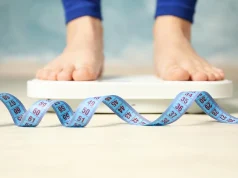For mid-urethral sling, fewer adverse events with transobturator route versus retropubic route
MONDAY, July 6, 2015 (HealthDay News) — An intervention review indicates that mid-urethral sling (MUS) operations are a highly effective treatment for stress urinary incontinence (SUI) in women; however, complication rates and long-term need for repeat surgery are factors for patients to consider when choosing a procedure, according to the authors. The review was published online July 1 in The Cochrane Library.
Abigail A. Ford, M.D., of the Bradford Royal Infirmary in the United Kingdom, and colleagues reviewed 81 randomized or quasi-randomized controlled trials, involving 12,113 women, to assess the evidence for MUS operations in the treatment of female SUI.
The researchers found moderate quality evidence supporting similarly high rates of subjective cure in the short term (up to one year) following MUS operations using either the transobturator route (TOR; 62 to 98 percent) or the retropubic route (RPR; 71 to 97 percent). In the long term (over five years), rates of subjective cure ranged from 43 to 92 percent in the TOR group and from 51 to 88 percent in the RPR group. The rate of bladder perforation was lower for MUS operations with TOR (0.6 percent) compared with RPR (4.5 percent). Except for groin pain, adverse events occurred less frequently with TOR.
“This is a very significant review informing women about the minimally invasive surgical options available for the treatment of this very debilitating condition,” Ford said in a statement. “It helps to clarify the pre-existing evidence on the effectiveness of these approaches and their side effects in the short term, as well as introducing longer term evidence of efficacy and safety. It helps to give women more information to make an informed choice.”
Several authors disclosed financial ties to pharmaceutical companies.
Copyright © 2015 HealthDay. All rights reserved.








